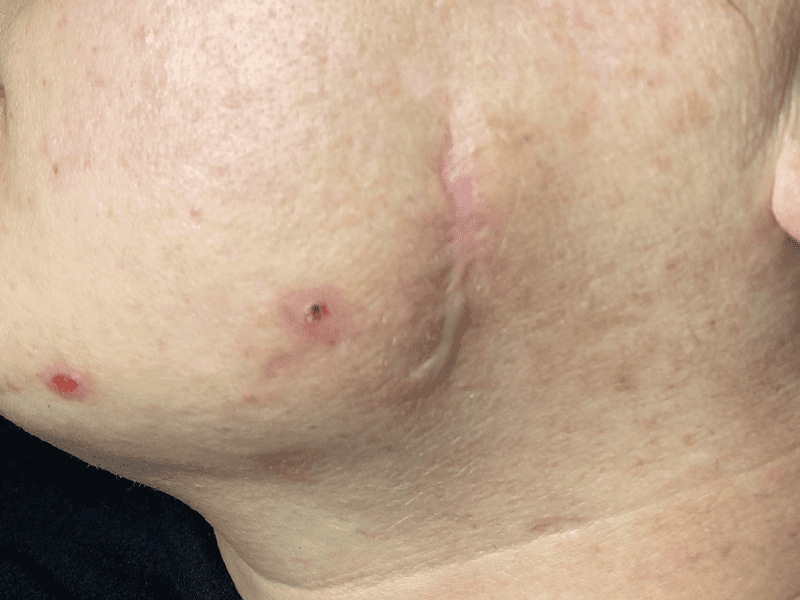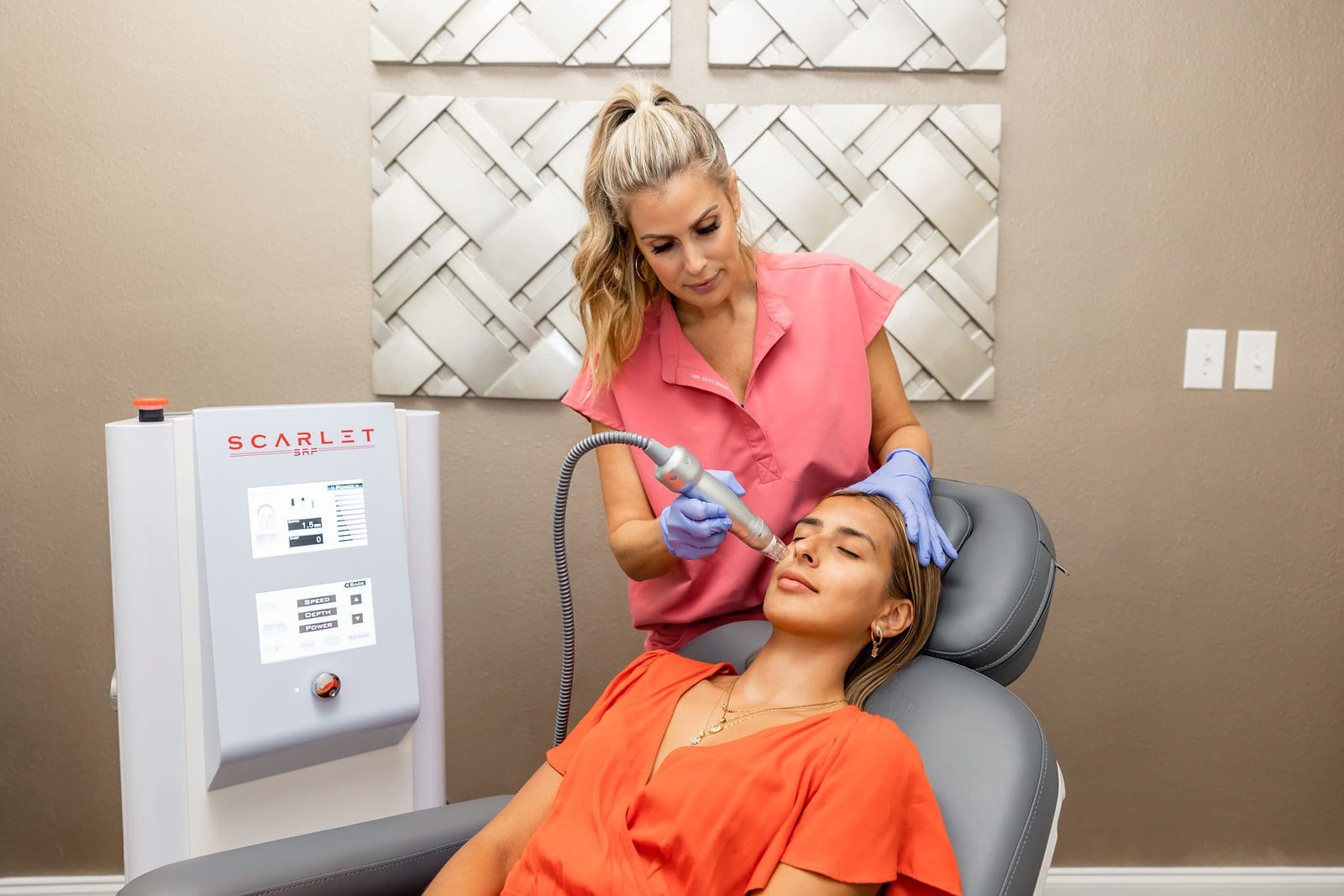Acne & Surgical Scar Revision
- Home
- Treatment Menu
- Acne & Surgical Scar Revision
What is Acne & Surgical Scar Revision?
Acne and surgical Scar Revision is a specialized medical and cosmetic procedure aimed at improving the appearance of scars resulting from acne breakouts or surgical procedures. The primary goal of scar revision is to minimize the visibility of scars, enhance skin texture, and create a smoother and more aesthetically pleasing skin surface.
Common Aesthetic Concerns Addressed by Acne & Surgical Scar Revision:
- Scar visibility
- Depressed scars
- Hypertrophic scars
- Discoloration
- Scar tightness
- Confidence


How Does Acne & Scar Revision Work?
Acne and scar revision involve a range of treatments and procedures aimed at improving the appearance and texture of scars, whether they result from acne, surgery, or other causes. The specific method used depends on the type, size, and location of the scar, as well as individual patient factors. Here’s an overview of how acne and scar revision works:
Topical Treatments: For mild acne scars and some surface imperfections, topical treatments such as creams or gels containing ingredients like retinoids, alpha hydroxy acids (AHAs), or silicone may be recommended. These products help improve skin texture and minimize the appearance of scars over time.
Chemical Peels: Chemical peels involve the application of a chemical solution to the skin’s surface, which exfoliates the top layer and stimulates collagen production. This can help improve the texture and tone of the skin and reduce the appearance of certain types of scars.
Microneedling: Microneedling, also known as collagen induction therapy, involves the use of a device with tiny needles that create controlled micro-injuries in the skin. This process stimulates collagen production and helps with scar remodeling. It’s particularly effective for rolling and atrophic scars.
Laser Therapy: Various laser treatments, including fractional laser and CO2 laser, can be used to target different types of scars. Laser therapy helps resurface the skin, stimulate collagen production, and improve the overall appearance of scars. Fractional laser treatments are often preferred for their precision and reduced downtime.
Dermal Fillers: Dermal fillers containing hyaluronic acid or other biocompatible materials can be used to fill in depressed scars and create a smoother skin surface. This approach is effective for certain types of atrophic scars.
Combination Approaches: In many cases, a combination of treatments is used to address different aspects of scar improvement. For example, a patient may undergo a series of laser treatments followed by microneedling and topical treatments.
Benefits of Acne & Surgical Scar Revision:
- Improved Skin Texture: Acne and scar revision treatments can significantly improve the texture of the skin. They help to reduce the rough or uneven surface caused by scars, making the skin feel smoother to the touch.
- Minimized Scar Visibility: These treatments work to minimize the visibility of scars, making them less noticeable. This can boost self-confidence and improve overall skin aesthetics.
- Enhanced Skin Tone: Scar revision procedures, such as chemical peels and laser therapy, can help even out skin tone by reducing hyperpigmentation and redness commonly associated with scars.
- Stimulated Collagen Production: Many scar revision techniques, including microneedling and laser therapy, stimulate collagen production. Collagen is essential for skin elasticity and can contribute to a more youthful appearance.
- Non-Invasive Options: Some scar revision methods, such as topical treatments, chemical peels, and microneedling, are non-invasive and require little to no downtime. Patients can return to their regular activities relatively quickly.
- Long-Lasting Results: Many individuals experience long-lasting results from scar revision treatments. Once the skin heals and collagen production is stimulated, the improvements can be sustained for an extended period.
- Reduced Self-Consciousness: Successfully addressing scars can reduce self-consciousness and improve self-esteem. Feeling more confident in one’s skin is a significant psychological benefit of scar revision.
The Science Behind Light Resurfacing:
Scar revision treatments in a medspa primarily rely on scientific principles that aim to improve the appearance of scars. These methods may include collagen remodeling, promoting cell turnover, and harnessing the body’s natural wound healing mechanisms. Some treatments focus on reducing inflammation around scars, while others involve topical agents to hydrate the skin and fade discoloration. Laser and light therapies use specific wavelengths to target pigmentation and stimulate collagen production. What’s essential to understand is that scar revision isn’t a one-size-fits-all approach; it’s tailored to each individual’s scar characteristics.
Treatments
Get in touch




